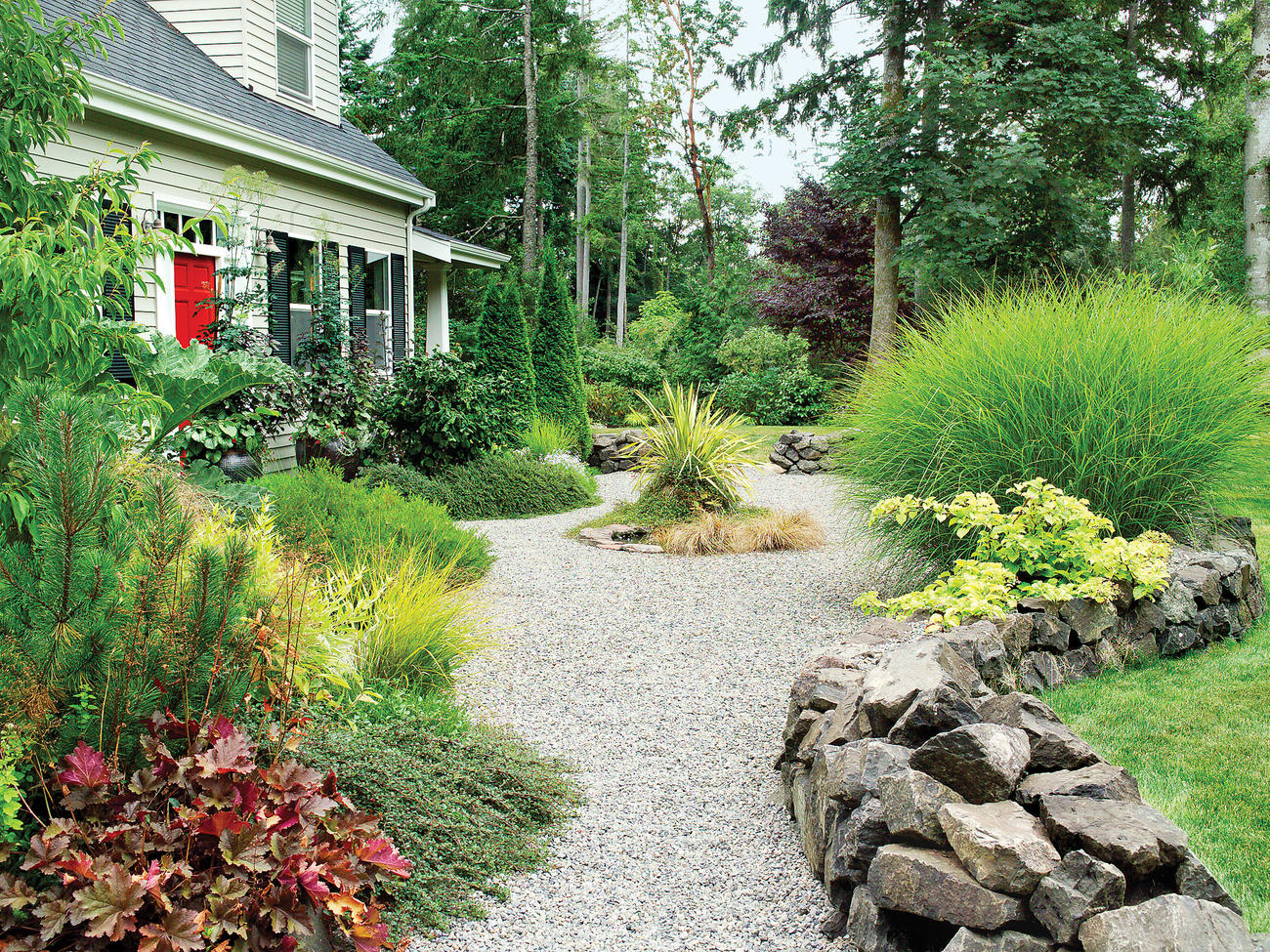
Landscaping with Gravel

Norm Plate
Hard yet soft ― these seemingly contradictory qualities are part of gravel’s appeal.
Durable enough to cover paths, terraces, and driveways, gravel conveys a softer mood than most other types of paving, says Susan Calhoun, garden designer for the Bainbridge Island, Washington. “It feels more organic than pavers or brick,” says Calhoun, who prefers to limit the “harder” materials to entrances and heavily used outdoor areas, choosing gravel everywhere else.
“It’s the perfect transitional material from house to garden.”
Gravel is also versatile, says Los Angeles landscape architect Mia Lehrer. It looks totally natural outside homes in the Italian, French, or English style, yet equally at ease around sprawling ranch houses and contemporary structures.
“It can look casual or crisp, depending on how you use it,” Lehrer says.
Flexibility is what Los Angeles landscape architect Rob Steiner most appreciates about gravel. It conforms to any shape, he says, and it’s easy to change.
Want to add a new flower bed? Just move the gravel aside ― “no jackhammers needed.” Gravel works well in all climates, but for different reasons. In arid regions, it makes a great groundcover for areas of the garden that won’t be planted and irrigated.
And gardeners in the wetter Northwest appreciate gravel’s quick drainage. “It never puddles up, which is why I love it for paths,” Calhoun says.
Affordability is, of course, another benefit, especially if you use local rather than more expensive imported gravel.
“It’s a highly cost-effective way to cover an area,” Steiner says.
Finally, there’s the sensuous quality. Gravel’s earthy texture, its give underfoot, and its crunchy sound are the reasons why this oldest of hardscapes will always be perceived as the softest of paving materials.
3 WAYS WITH GRAVEL
Blur the boundaries
Allow plants to spill onto gravel to visually soften path edges. ‘Tom Thumb’ cotoneaster is a perfect plant for this use; a deciduous groundcover, it sends out a fan of delicate branches with small leaves that turn blood red in fall. In the planting above, cotoneaster combines with yellowish Japanese forest grass (Hakonechloa macra), a self-sown baby gunnera, and a straw-colored Carex ‘Knightshayes’ around a water-filled rock.
Mix gravel with rocks of varying sizes to add interest in large areas. In the landscaping pictured here, this technique also solved a drainage problem.
The gravel path, edged on the right with ‘Libelle’ hydrangea and a bank of maidenhair ferns, straddles a cluster of large, flat stones that creates a bridge over a seasonal runoff channel.
Water runs through a pipe hidden beneath the channel’s river rocks to a catchment pond at the far end.
Combine with larger stones
Mix gravel with rocks of varying sizes to add interest in large areas. In the landscaping pictured at left, this technique also solved a drainage problem. The gravel path, edged on the right with ‘Libelle’ hydrangea and a bank of maidenhair ferns, straddles a cluster of large, flat stones that creates a bridge over a seasonal runoff channel. Water runs through a pipe hidden beneath the channel’s river rocks to a catchment pond at the far end.
When a gravel path and adjacent planting beds are new, the transition from bare soil to gravel can give the garden an unfinished look.
One solution: Define the path edges with larger stones. As plants grow, they’ll tumble over and hide the rocks.
In this garden, lady’s-mantle with chartreuse blooms surrounds the stone fountain in foreground, while cape fuchsia (Phygelius) with orange-pink flowers spills into the path.
Add a rock border
When a gravel path and adjacent planting beds are new, the transition from bare soil to gravel can give the garden an unfinished look. One solution: Define the path edges with larger stones. As plants grow, they’ll tumble over and hide the rocks. In the garden shown below, lady’s-mantle with chartreuse blooms surrounds the stone fountain in foreground, while cape fuchsia (Phygelius) with orange-pink flowers grows across the path.
GRAVEL BASICS
Gravel refers to rocks ranging in size from ⅛ inch to 1½ inches. It comes in two forms: Manmade crushed rock has sharp, irregular edges; nature-made river rock (also known as natural pebbles) is rounded.
Choose the right type
Visit your local landscape supply yard to experience the look and feel of different types of gravel. Consider how it will be used.
• For high-traffic areas, such as paths and patios, use manmade crushed rock. Because the pieces bind together well, they create a more stable surface for walking. The most common size is ⅜ inch, an all-purpose gravel that’s also good as a mulch around plantings. For a softer surface under bare feet, use ¼-inch or finer natural pebbles.
• For low-traffic areas, river rock is an attractive choice. Its larger, smoother pieces are less stable underfoot than crushed rock, but they have more presence.
Lay the groundwork
Although many references suggest excavating 6 to 8 inches for a gravel path and layering crushed rock, sand, and then gravel, most designers don’t use this method. They say the smaller pieces inevitably work their way up, spoiling the clean look of the gravel. Landscape fabric also tends to show up at the surface. Instead, lay a 2- to 3-inch-thick layer of gravel directly on bare, weed-free soil that’s been compacted with a tamper or roller.
Keep it tidy
Rake gravel regularly to remove leaves and other debris. Use a rake with round wire tines.
